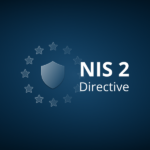 stands for the Network and Information Systems Directive 2, which is an updated version of the original NIS Directive (Directive 2016/1148). First introduced in 2016, the NIS Directive aimed to improve the cybersecurity resilience of the EU’s critical infrastructure sectors. However, as cyber threats have evolved, the EU recognized the need to strengthen these regulations to address the challenges posed by a more complex and interconnected digital landscape.
stands for the Network and Information Systems Directive 2, which is an updated version of the original NIS Directive (Directive 2016/1148). First introduced in 2016, the NIS Directive aimed to improve the cybersecurity resilience of the EU’s critical infrastructure sectors. However, as cyber threats have evolved, the EU recognized the need to strengthen these regulations to address the challenges posed by a more complex and interconnected digital landscape.
NIS2, adopted in December 2022, builds on its predecessor but expands its scope, introduces stricter security requirements, and enhances oversight and enforcement across member states.
Key Features of NIS2
- Broader Scope and Coverage
One of the most significant changes under NIS2 is the expansion of its scope. The original NIS Directive focused primarily on operators of essential services (OES) like energy, transport, and healthcare. NIS2, however, brings a wider range of sectors under its umbrella, including:
- Digital infrastructure: Cloud services, data centers, and online platforms
- Public administration: Local, regional, and national authorities
- Health sector: Hospitals, healthcare providers, and pharmaceutical services
- Finance: Banks, insurance companies, and payment systems
By extending the scope, NIS2 ensures that more critical sectors are covered and better protected from cyber threats.
- Stricter Security Requirements
NIS2 sets out more detailed and demanding security requirements for organizations in the affected sectors. Companies must adopt risk management practices to mitigate cybersecurity threats. This includes:
- Incident response: Developing and maintaining robust plans for responding to cybersecurity incidents
- Supply chain security: Ensuring that third-party providers and suppliers meet cybersecurity standards
- Security measures: Implementing technical measures such as encryption, firewalls, and intrusion detection systems
- Business continuity: Preparing for the continuity of services in case of a cyberattack
The directive encourages companies to adopt a “security by design” approach to their networks and systems, making cybersecurity an integral part of their infrastructure rather than an afterthought.
- Incident Reporting and Transparency
NIS2 places a strong emphasis on incident reporting. Under the directive, businesses and organizations must report significant cybersecurity incidents to national authorities within 24 hours of detection. This rapid reporting requirement helps authorities track cyber threats and better coordinate responses to mitigate any damage. The directive also promotes greater transparency, ensuring that information about major incidents is shared publicly when appropriate.
- Increased Governance and Accountability
With NIS2, there’s a clear emphasis on governance and accountability. Organizations covered by the directive must designate a cybersecurity officer or a team responsible for ensuring compliance. This person or team will oversee cybersecurity practices, conduct risk assessments, and ensure that the company meets all legal and regulatory obligations.
Moreover, national authorities now have enhanced powers to enforce the directive. They can impose hefty fines on organizations that fail to comply, making cybersecurity a board-level concern rather than solely the responsibility of IT departments.
- Supply Chain Security
Cyberattacks are increasingly targeting third-party suppliers as a way to compromise larger organizations. To address this risk, NIS2 introduces specific requirements for supply chain security. Organizations must assess the security practices of their suppliers and service providers, ensuring that any third-party vendors comply with the same cybersecurity standards.
By doing so, NIS2 aims to create a more robust and resilient supply chain ecosystem, where vulnerabilities in one part of the chain won’t jeopardize the entire system.
Why NIS2 Matters
As the EU continues to digitize its economy, the risk of cyberattacks grows ever higher. From ransomware attacks to data breaches, cyber threats can have devastating consequences for businesses, governments, and individuals alike. NIS2 aims to address these risks by fostering a culture of cybersecurity within organizations and across industries.
For businesses, compliance with NIS2 will become a competitive advantage. Companies that demonstrate strong cybersecurity practices are not only reducing their own risks but are also making themselves more attractive to customers, investors, and partners. Those who fail to comply, on the other hand, could face significant penalties and reputational damage.
For EU citizens, NIS2 enhances the overall safety and reliability of digital services. Whether it’s using an online banking app, getting healthcare services, or relying on public transportation systems, NIS2 ensures that these essential services are secure, resilient, and capable of withstanding cyber threats.
The Road Ahead: Compliance and Challenges
While NIS2 aims to enhance cybersecurity across the EU, its success hinges on effective implementation by member states. National authorities will play a crucial role in enforcing the directive, ensuring that businesses meet the required security standards, and providing guidance on how to comply. For many organizations, this will require significant investments in cybersecurity technologies, staff training, and risk management systems.
The timeline for full implementation varies by country, but organizations should start preparing now to ensure they meet the requirements once the directive comes into effect. This preparation will not only help avoid penalties but will also enable organizations to better protect themselves against the growing cyber threat landscape.
Conclusion
NIS2 represents a bold step forward in securing the EU’s digital future. By expanding its scope, enforcing stricter security standards, and prioritizing supply chain security, it aims to create a more resilient and secure digital ecosystem. While compliance will require significant effort from businesses, the benefits of improved security—both for organizations and for the public—are undeniable.
As cyber threats continue to evolve, NIS2 is a vital tool in the EU’s fight against cybercrime, ensuring that essential services remain safe, reliable, and trustworthy for everyone.

Leave a Reply